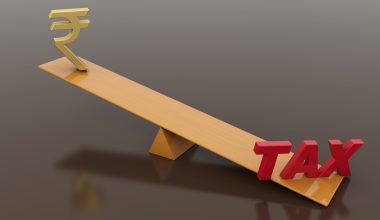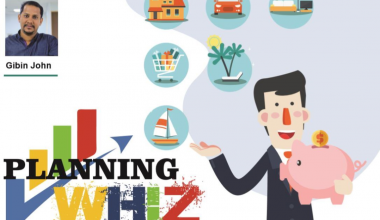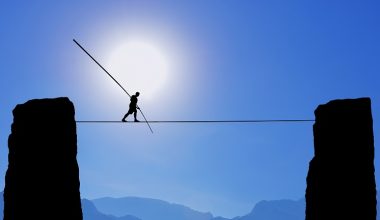One day, sage Narada was passing by the forest where Ratnakara lived. Sensing a good opportunity, Ratnakara attacked Narada intending to rob him. However, Narada remained unfazed. This surprised Ratnakara, who was used to the sight of people cowering in fear at the very mention of his name. Narada questioned Ratnakara as to why he was committing the sin of robbing others. And, Ratnakara replied, “To feed my family.” To this, Narada said, “Ratnakara, go and ask your family if they will also share the sins you are committing to take care of them. After tying Narada to a tree to prevent him from escaping, Ratnakara returned to his family and asked every member if they were willing to share his sins. No one was ready or willing to share the burden of Ratnakara’s sins. Heartbroken at his family’s response, Ratnakara returned to Narada and asked him the path to salvation.
You might have already guessed who Ratnakara turned out to be but let me call your attention towards his family’s unwillingness to share the burden of what Ratnakara does. Trading is no different. Would your family be ready to bear the consequences borne out of your trading losses?
A man’s gotta do what a man’s gotta do
Cost of Trading. When you start trading, you are probably young, studying or in the early stage of your career, and most likely single. The initial capital is usually small, being a sum of gifts from your uncles and aunties, or from what is left of your salary after expenditures. The experience of trading is new to some, while some have been exposed to it, courtesy friends, or relatives. Either way, you are low on capital, and in most cases, the risk appetite is low as well at this stage, but the whole experience gets you a high. With time, the risk appetite grows, and you taste substantial returns. Some go through rough patches and face losses, while some remain lucky to not incur any substantial losses. But either way, the experience is a personal one. That is because, the capital you put to risk, is one’s own, and you get to enjoy the spoils all by yourself, while the sense of achievement gets you a high. Once you get the hang of it, you tend to add infrastructure to your set up to boost your chances of success and that is when your cost also goes up. It could be in terms of dedicated wifi, powerful PCs, mobiles and tablets, multiple monitors, multiple broker accounts, research subscriptions, training courses, trading conclaves etc. Add opportunity cost to this, if one has resigned the main job to focus entirely on trading. Now bring risk to this set up. A substantial loss from trading puts each of the items look fancy and end up as a burden, and at least some of them have recurring costs, to keep them running. This is even before you bring your partner or family to the picture. While the trading experience is a very personal one, the financial impact is not. Profits get shared, while losses could eat away existing resources that were meant to support other essential activities of the family.
Irrespective of your commitments to your family as well as society, you as an individual has every right to a personal space, wherein you try out and experience new things. And if you gain out of it, think of ways in which you can better that process, and thereby the experience. This is a personal journey, and there is no reason why one must deny the same as long as you build in necessary safeguards into your system and have the right approach. Here are a few thoughts along the same.
Safeguards could be as simple as having a stop loss in the system, when you have to be away from the terminal, or not having a stop loss placed too close to the current prices, considering prevailing volatility, that ends up risking the capital and the potentially multi bagger move. Placing a stop loss is a precision job, much more intricate than the entry, and it derives from the full knowledge of the risks I am exposing to, and what I am prepared to do when it happens. This approach is much more vital on the other spectrum of exit, that is at profit. This is because, unlike during down moves, when the risks of exit could be quantified in terms of the hit on the capital, a profit exit is an even difficult one, as markets often surprise on the upside.
Preparation could be just about real estate and how conveniently you arrange your stuff within your field of vision without having to break your neck or strain your eye, your monitor mounting set up, chair, power back up, etc. if you are into full time trading. Preparation could also be as simple, but utmost important, as getting your eye in, and easing into your system, at least 20 minutes before you make your trade, so that you get your funds, watchlist, decision models etc. up and ready to roll.
Dopamine detox involves identifying behaviours that you turn to too frequently for a quick boost—mainly things like social media, gaming, and watching TV—then taking a break from them for a few days to a week. The goal is to recalibrate your brain’s reward pathways**. Unfortunately, trading can also get addictive, and comes at a cost.
Keep your partner informed. This is perhaps the most onerous task that a trader faces, and if we put our opening story in perspective, it becomes morally and ethically vital to keep your partner/spouse informed. So even if full disclosure is not possible, it is important for the partner to have an understanding about the capital at risk, or the opportunity costs that may incur so that he/she can plan or act accordingly. In doing so that, such partner’s skill set, both emotionally as well as financially, to embrace an adverse situation could be higher than otherwise.
The final thing I would like to note is that trading is an art. It is not a place for adrenaline junkies, and unfortunately, these are those who often get highlighted when one speaks about trading. True Trading is like hunting. It requires the confidence in one’s ability to pull it off, the patience to wait for the prey, and skill sets to ride and persist through the challenges that pop up during the chase. If you feel you have these, you should pursue it.






